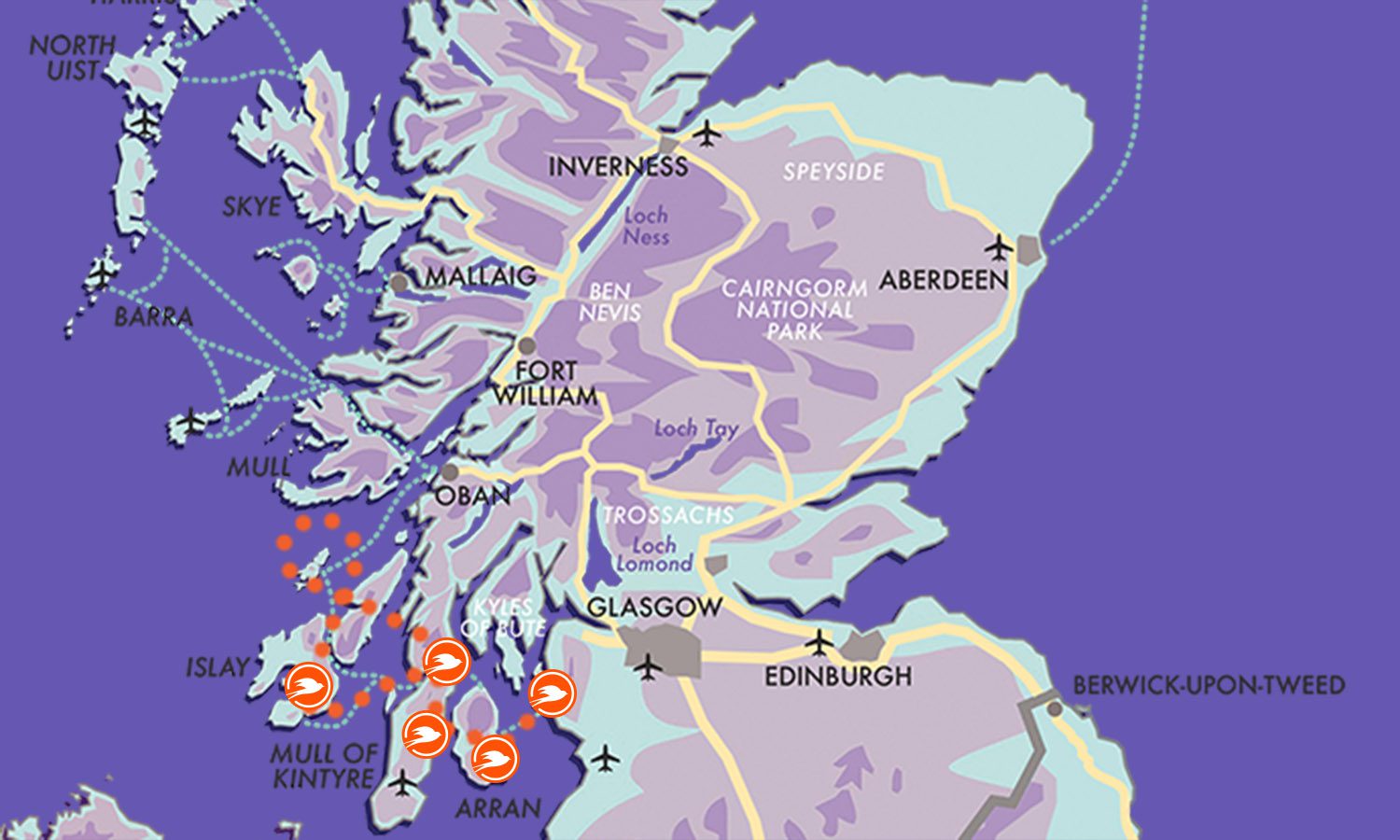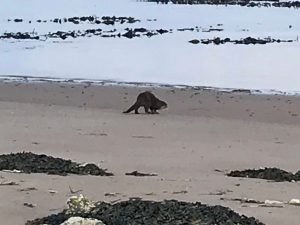Discover Arran, Islay & Kintyre
Find tranquillity at the Mull of Kintyre
Holiday inspiration currently loading...
A brace of Scotland’s finest and most contrasting islands, and an oft-overlooked peninsula, ready for a week-long self-drive exploration.
Disarmingly simple to reach from the Ayrshire coast, the Isle of Arran has long been the go-to destination for peace-seeking West-of-Scots, while often-overlooked Kintyre peninsula is an area rich with history and superb, empty beaches just waiting to be discovered. Intrepid drivers can’t resist a trip to the southern tip, the Mull of Kintyre, made world-famous by Sir Paul McCartney. Then hop on another ferry to the Hebridean Isle of Islay, for more striking scenery, wildlife, history and whisky galore.

This holiday covers the Isle of Arran, the Kintyre Peninsula and the Isle of Islay.
£1095 per person for April & October, and £1130 per person for May to September.
Prices are based on two people sharing an en-suite room for seven nights on a bed and breakfast basis in our specially chosen selection of small hotels and guest houses, and includes ferry travel for car and passengers in one direction to Arran from Ardrossan, to Kintyre from Arran, return to Islay and from Islay to Kennacraig.
Though not included, car rental is available for a range of vehicles – please just ask for details.
Before your departure, you will receive personalised holiday information including full directions, recommended routes, and suggestions on places to visit depending on your interests and our local knowledge to help you get the most from your holiday.
All itineraries and room types are presented subject to availability at specific hotels.
We work hard to make sure the unexpected doesn’t affect your trip. On rare occasions, changes or cancellations may occur, affecting accommodation, transport or excursions. We are committed to informing you of any such circumstances and will use our knowledge and resources to offer suitable alternatives wherever possible.
You are requesting availability for
This holiday can be arranged from April until October.
Availability is individually checked for a hand-picked selection of smaller hotels, guest houses and other independent businesses, so please bear with us and we will respond in 1-2 working days.
Please note: All fields marked * are required
All our holiday prices include a service charge of £9 per person per night towards the costs we incur in researching, planning and designing your holiday.
We guarantee to refund this service charge if you believe that arranging your holiday through McKinlay Kidd has not met your expectations for value. All we ask is that you write to us within 7 days of your return and explain your reason for claiming the refund. This will ensure that we can improve the experience for all our future guests.

Otters are supposedly secretive creatures but not this one! Last weekend we were sitting on our rug on the rocks enjoying peace and quiet and warm sun...
Glorious Autumn weather all week made the holiday special. Toured most of Kintyre and Islay - quiet and peaceful with lovely scenery.David & Iris, Leeds, England
Tailored to our requirements and time. Excellent suggestions.Janet & Terry, Suffolk